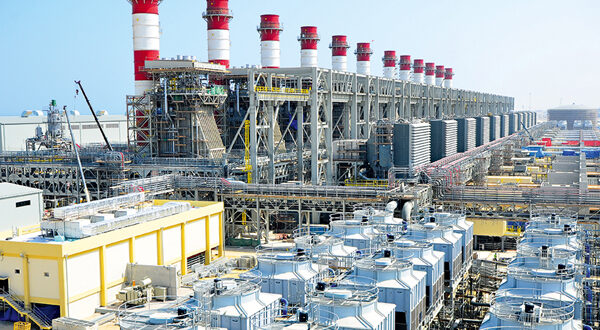For decades, Saudi Arabia has been regarded as the de facto leader of OPEC and a swing-producer critical to curtailing large price overshoots in either direction. Over the past few years, the Arab nation has borne the lion’s share of OPEC+ production cuts after recently agreeing to cut 1 million barrels per day or nearly half of the group’s 2.2 mb/d in pledged cuts. Well, it appears that Saudi Vision 2030 is already bearing fruit, and Riyadh might not be feeling the pinch from those cuts as much as many feared. Saudi Arabia’s Ministry of Economy and Planning has revealed that non-oil revenues hit 50% of the Kingdom’s gross domestic product (GDP) in 2023, the highest level ever.
The country’s non-oil economy was valued at 1.7 trillion Saudi Riyals (approximately 453 billion U.S. dollars) at constant prices, driven by steady growth in exports, investment and consumer spending. Last year, the Kingdom’s private-sector investments expanded by a brisk 57 percent, reaching a record high of 959 billion Saudi Riyals (254 billion dollars) while arts & entertainment and real service exports grew in triple-digits to the tune of 106 percent and 319 percent, respectively, reflecting the Kingdom’s transformation into a global destination for tourism and entertainment. Meanwhile, the food sector recorded 77 percent growth; transport and storage services grew 29 percent, health and education recorded growth of 10.8 percent, trade, restaurants and hotels at 7 percent while transport and communications increased 3.7 percent.
GCC Diversification Paying Off
Three years ago, Saudi Arabia’s Crown Prince Mohammed bin Salman unveiled Saudi Vision 2030, the Kingdom’s ambitious roadmap for economic diversification, global engagement, and enhanced quality of life. The main thrust of the vision is to diversify Saudi Arabia’s economy and create dynamic job opportunities for its citizens through privatization of state-owned assets, including partial IPO of Saudi Aramco; unlocking underdeveloped industries such as renewable energy, manufacturing and tourism and modernizing the curriculum and standards of Saudi educational institutions from childhood to higher learning.
In the economic plan, Saudi Arabia has set a target to develop ~60 GW of renewable energy capacity by 2030, multiples higher than the country’s current installed capacity of only 2.8 GW and comparable to ~80 GW of power plants burning gas or oil. With its steady Red Sea breezes and sun-scorched expanses, Saudi Arabia really is prime real estate for renewable energy generation. Meanwhile, Saudi Aramco has announced plans to spend $110 billion over the next couple of years to develop the Jafurah gas field, estimated to hold 200 trillion cubic feet of gas. The gas will then be converted into a much cleaner fuel: Blue hydrogen.
The Saudi government is also building a $5 billion green hydrogen plant that will power the planned megacity of Neom. Dubbed Helios Green Fuels, the hydrogen plant will use solar and wind energy to generate 4GW of clean energy that will be used to generate green hydrogen.
Last year, Aramco made the world’s first blue ammonia shipment–from Saudi Arabia to Japan. Japan is looking for dependable suppliers of hydrogen fuel with Saudi Arabia and Australia on its shortlist.
But it’s not just Saudi Arabia that’s succeeding with its economic diversification. Last year, the World Bank published the World Bank Gulf Economic Update (GEU) that states that diversification efforts in the Gulf Cooperation Council (GCC) region are paying off.
“The region has shown notable improvements in the performance of the non-oil sectors despite the downturn in oil production during most of 2023. Diversification and the development of non-oil sectors has a positive impact on the creation of employment opportunities across sectors and geographic regions within the GCC,” said Khaled Alhmoud, Senior Economist at the World Bank.
The World Bank estimates that GCC saw its GDP grow by 1% in 2023 with the weaker performance driven primarily by lower oil sector activities–which contracted by 3.9%–to reflect OPEC+ successive production cuts and the global economic slowdown. Thankfully, the region will see economic activity picking up again to grow at 3.6 and 3.7 percent in 2024 and 2025, respectively. According to the World Bank, the reduction in GCC’s oil sector activities will be compensated for by non-oil sectors, which are expected to grow by 3.9 % in 2023 and 3.4 % in the medium term driven by accommodative fiscal policy, strategic fixed investments and sustained private consumption.

 Iran Energy News Oil, Gas, Petrochemical and Energy Field Specialized Channel
Iran Energy News Oil, Gas, Petrochemical and Energy Field Specialized Channel



